USB Devices Market Summary
As per Market Research Future analysis, the USB Devices Market Size was estimated at 35.05 USD Billion in 2024. The USB Devices industry is projected to grow from 38.73 USD Billion in 2025 to 105.24 USD Billion by 2035, exhibiting a compound annual growth rate (CAGR) of 10.51% during the forecast period 2025 - 2035
Key Market Trends & Highlights
The USB Devices Market is experiencing robust growth driven by technological advancements and increasing consumer demand.
- North America remains the largest market for USB devices, driven by high consumer electronics adoption.
- Asia-Pacific is the fastest-growing region, reflecting a surge in e-commerce and portable device usage.
- Webcams represent the largest segment, while USB flash drives are witnessing the fastest growth due to rising data storage needs.
- Key market drivers include the increasing adoption of portable devices and technological advancements in USB standards.
Market Size & Forecast
| 2024 Market Size | 35.05 (USD Billion) |
| 2035 Market Size | 105.24 (USD Billion) |
| CAGR (2025 - 2035) | 10.51% |
Major Players
Apple Inc (US), Samsung Electronics (KR), SanDisk Corporation (US), Kingston Technology Company (US), Transcend Information Inc (TW), Lexar Media Inc (US), PNY Technologies Inc (US), ADATA Technology Co Ltd (TW), Toshiba Corporation (JP)
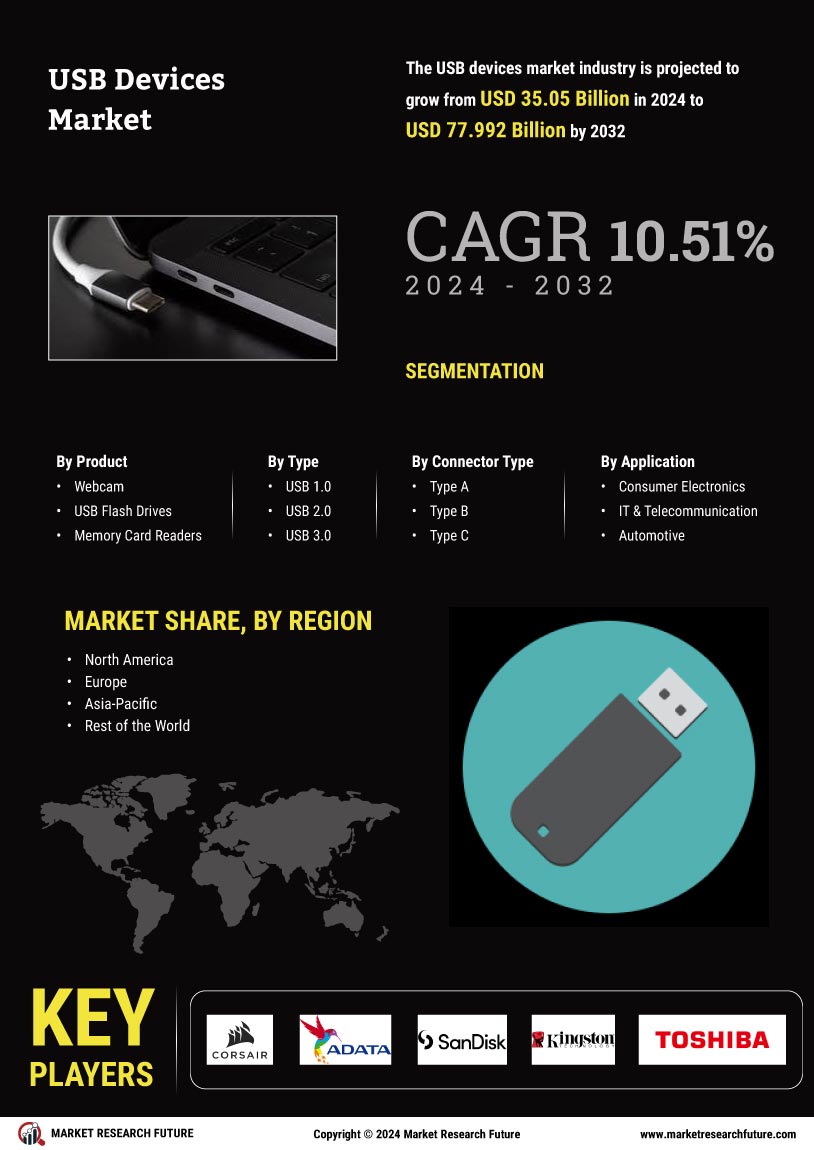
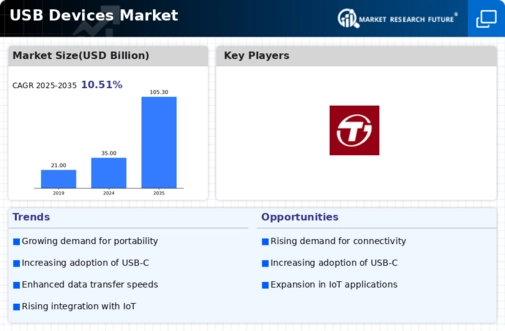
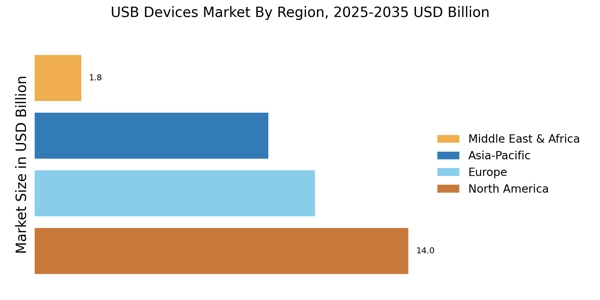
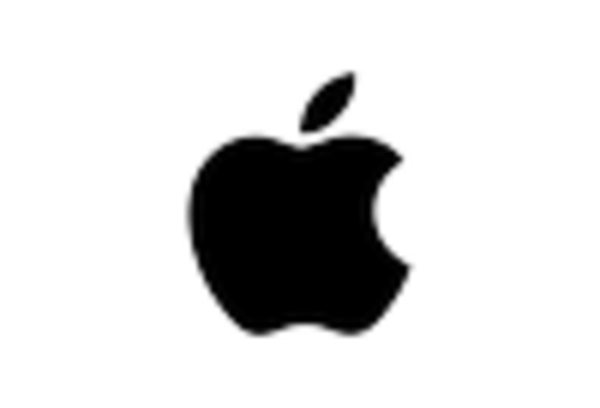
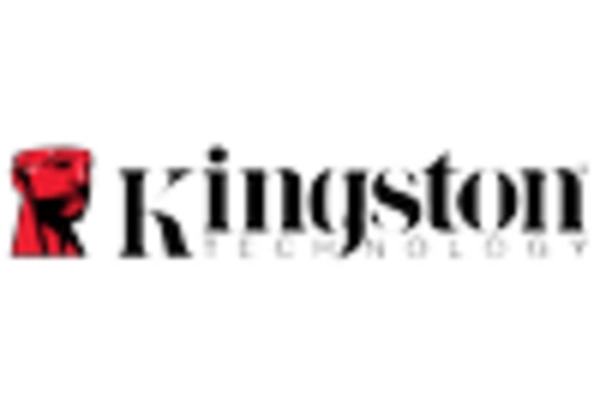
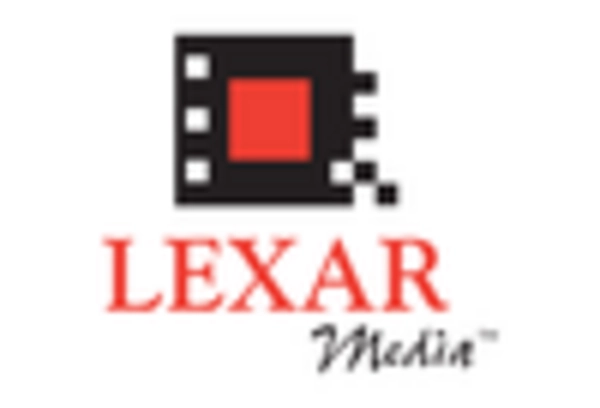
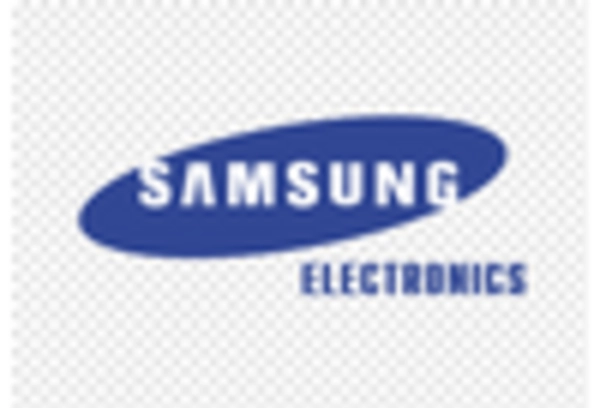
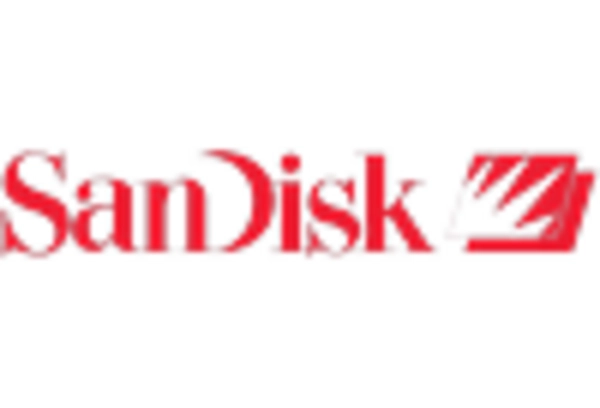
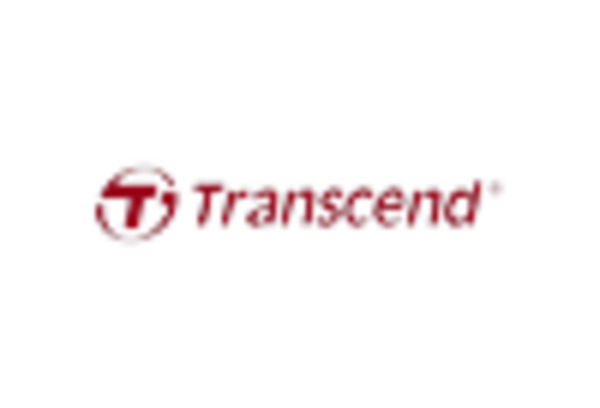








Leave a Comment